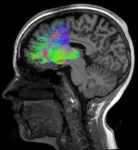(Press-News.org) Not everyone responds equally well to treatments for inflammatory bowel disease (IBD). What will work for individual patients involves trial and error during the treatment process. Now, a team of researchers led by Charité – Universitätsmedizin, in collaboration with colleagues in Berlin and Bonn, has succeeded in identifying a biomarker that indicates whether or not treatment with a certain medication called an immunomodulator will be successful. Writing in the journal Gastroenterology,* the researchers note that this will permit more targeted use of the therapy.
Inflammatory bowel disease (IBD) takes multiple forms, including Crohn’s disease and ulcerative colitis. It is caused by an overactive immune response in the gastrointestinal tract. People with the disease experience abdominal cramping, diarrhea, and fatigue. There is no cure; so far, the only treatment has been to alleviate symptoms and control inflammation. “As a clinical scientist, I am actively involved in patient care,” says Prof. Ahmed Hegazy from the Department of Gastroenterology, Infectious Diseases and Rheumatology at Charité. “This disease involves episodes known as flares, which are often unpredictable, so the treatment is constantly being adjusted. So far, it has not been possible to predict the individual course of the disease or how patients will respond to various treatment options, which is what makes treatment so challenging.”
One highly effective treatment option with only minor side effects is known as integrin-blocking therapy. It prevents certain immune cells from entering the gastrointestinal tract and triggering inflammatory processes there. Vedolizumab, a specific antibody to a specific integrin, has a blocking effect: It binds to T helper cells, keeping them from entering the gastrointestinal tract. “Integrin-blocking therapy is highly effective in about two-thirds of patients. But for the other third, it doesn’t work at all. Previously, figuring out who would respond to the treatment was a matter of trial and error. That is tedious, time-consuming, and costly, plus it is often quite frustrating for patients,” Hegazy says. “It would be helpful to have a biomarker that can show in advance whether or not the treatment is promising. That’s exactly what we set out to find with our study.”
Machine learning helps with pattern recognition
The researchers’ extensive studies were based on 47 patients with chronic IBD. Blood samples were taken before they started treatment with vedolizumab and six weeks after initiation of treatment. The researchers used advanced analytical methods such as mass cytometry, single-cell RNA sequencing, and serum proteomics to examine the samples. “We zeroed in on different kinds of immune cells and certain proteins and looked for potential changes caused by the treatment,” Hegazy explains. “This generated extensive data, which we then analyzed using machine learning. Machine learning is a field of artificial intelligence that uses algorithms and statistical models to allow computers to learn from data and recognize patterns without needing to be explicitly programmed in advance. This allowed us to identify patterns that help to predict which patients are more likely to respond to this form of treatment.” The interdisciplinary team made up of researchers from the fields of medicine, bioinformatics, mathematics and biology, which also included researchers from the Berlin Institute of Health at Charité (BIH), the German Rheumatism Research Centre Berlin (DRFZ), and the University of Bonn, identified the same patterns in studies of another group of patients. That group of 26 participants helped the researchers to validate the results of their study.
High biomarker levels, low treatment response
One especially meaningful molecule was a cell division protein called Ki67, which is produced at elevated levels when T helper cells divide. Patients with high levels of these cells in their blood prior to treatment did not respond to vedolizumab. “We were able to figure out the molecular phenomenon behind this: These T helper cells do not have binding sites for vedolizumab, so they are able to pass unimpeded into the gastrointestinal tract and continue to contribute to inflammation,” Hegazy explains. “These cells have different trafficking molecules that allow them to move into the gastrointestinal tract. This makes Ki67 a good indicator of the presence of vedolizumab-resistant T helper cells.”
Moving into clinical practice
The researchers plan to verify their findings through large multicenter studies and study the reliability of the biomarker they have identified in detail. Plans also call for further developing their detection and measurement methods so they can be incorporated into routine clinical practice. “Reliable biomarkers are the key to individualized therapy, and thus better treatment, for our patients with chronic inflammatory bowel disease,” says Prof. Britta Siegmund, the department’s director. Once that condition is met, decisions regarding the right individual form of treatment can be made faster and with greater accuracy. And that represents a step toward personalized medicine that will bring clarity for patients early on.
*Horn V. et al. Multimodal Profiling of Peripheral Blood Identifies Proliferating Circulating Effector CD4+ T Cells as Predictors for Response to Integrin α4β7-Blocking Therapy in Inflammatory Bowel Disease. Gastroenterology. 2024 Sep 28. doi: 10.1053/j.gastro.2024.09.021
Contact:
Prof. Ahmed Hegazy
Lichtenberg Professor in Translational Gastroenterology
Department of Gastroenterology, Infectious Diseases and Rheumatology
Charité – Universitätsmedizin Berlin
T: +49 30 450 751 494 5
Links:
Original publication
Department of Gastroenterology, Infectious Diseases and Rheumatology (including Nutritional Medicine)
Hegazy Lab: Inflammatory Mechanisms
END
Unlocking predictors of success in treating inflammatory bowel disease (IBD)
Biomarker indicates response to immune system modulator therapy in advance
2024-11-07
ELSE PRESS RELEASES FROM THIS DATE:
New PFAS removal process aims to stamp out pollution ahead of semiconductor industry growth
2024-11-07
CHAMPAIGN, Ill. — A University of Illinois Urbana-Champaign study is the first to describe an electrochemical strategy to capture, concentrate and destroy mixtures of diverse chemicals known as PFAS — including the increasingly prevalent ultra-short-chain PFAS — from water in a single process. This new development is poised to address the growing industrial problem of contamination with per- and polyfluoroalkyl substances, particularly in semiconductor manufacturing.
A previous U. of I. study showed that short- and long-chain PFAS can be removed from water using electrochemically driven adsorption, referred to as ...
Researchers identify reduction in heart failure-related risk factors following metabolic surgery
2024-11-07
Researchers Identify Reduction in Heart Failure-Related Risk Factors following Metabolic Surgery
Recent study suggests that metabolic surgery for patients with heart failure can reduce dependency on oral diuretics, which are used to manage heart failure symptoms
FOR IMMEDIATE RELEASE
November 7, 2024
BATON ROUGE – Pennington Biomedical Research Center researchers at the Metamor Institute, along with colleagues from Our Lady of the Lake and LSU Health-New Orleans, have recently determined that metabolic surgery on patients with heart failure can result in a reduction in the need for oral diuretics, which are used to manage symptoms such as venous and ...
The Kenneth H. Cooper Institute at Texas Tech University Health Sciences Center unveiled in Dallas
2024-11-07
For more than 50 years, as a leading pioneer of preventive medicine and the “father of aerobics,” Kenneth H. Cooper, M.D., has revolutionized health and fitness worldwide. Similarly, the Texas Tech University Health Sciences Center (TTUHSC) has long been dedicated to education, patient care and research. Today (Nov. 4) TTUHSC officially welcomed The Cooper Institute as part of its organization with a special presentation and unveiling of its new name – the Kenneth H. Cooper Institute at Texas Tech University Health Sciences Center.
The Cooper ...
DNA evidence rewrites story of people buried in Pompeii eruption
2024-11-07
In 79 AD, Mount Vesuvius experienced one of its most significant eruptions, burying the Roman city of Pompeii and its inhabitants under a thick layer of small stones and ash known as lapilli. Many of Pompeii's inhabitants lost their lives as their homes collapsed under the weight of the lapilli raining down from many kilometres above. Those who survived the initial phase of the eruption eventually succumbed to the dangerous pyroclastic flows. This fast-moving stream of hot gas and volcanic matter instantly enveloped their bodies in a solid layer of ash, effectively preserving their bodies, including their features.
Since the 1800s, casts had been made by pouring plaster into the ...
DNA evidence rewrites histories for people buried in volcanic eruption in ancient Pompeii
2024-11-07
In 79 CE, the active volcanic system in southern Italy known as Somma-Vesuvius erupted, burying the small Roman town of Pompeii and everyone in it. The “Pompeii eruption” covered everything in a layer of ash that preserved many of the bodies. Now, ancient DNA collected from the famed body casts alters the history that’s been written since the once forgotten town’s rediscovery in the 1700s. As reported on November 7, 2024, in Current Biology, the DNA evidence shows that individuals’ sexes and family relationships don’t match ...
People with schizophrenia show distinct brain activity when faced with conflicting information
2024-11-07
Scientists have known for decades that the classic symptoms of schizophrenia, such as jumping to conclusions or difficulty adjusting to new information, can be attributed to poor communication between the cerebral cortex and the thalamus, known as the brain’s central switchboard. By measuring brain cell activity between these two regions as volunteers completed ambiguous tasks, a team of Tufts University School of Medicine and Vanderbilt University School of Medicine researchers found a way to use someone’s sensitivity to uncertainty as a diagnostic tool.
In a study published November 7 in the journal ...
Climate change: Significant increase in carbon dioxide emissions from private aviation
2024-11-07
Annual emissions of carbon dioxide (CO2) from private aviation increased by 46% between 2019 and 2023, according to an analysis published in Communications Earth & Environment. The results also show that some individuals who regularly use private aviation may produce almost 500 times more CO2 in a year than the average individual, and that there were significant emissions peaks around certain international events, including COP 28 and the 2022 FIFA World Cup.
Private aviation is highly energy-intensive, emitting significantly more CO2 per passenger than commercial flights, but is used by approximately 0.003% ...
Planting trees in the Arctic could make global warming worse, not better, say scientists
2024-11-07
Tree planting has been widely touted as a cost-effective way of reducing global warming, due to trees’ ability to store large quantities of carbon from the atmosphere. But, writing in the journal Nature Geoscience, an international group of scientists argue that tree planting at high latitudes will accelerate, rather than decelerate, global warming.
As the climate continues to warm, trees can be planted further and further north, and large-scale tree-planting projects in the Arctic have been championed by governments and ...
Finding function for noncoding RNAs using a new kind of CRISPR
2024-11-07
Genes contain instructions for making proteins, and a central dogma of biology is that this information flows from DNA to RNA to proteins. But only two percent of the human genome actually encodes proteins; the function of the remaining 98 percent remains largely unknown.
One pressing problem in human genetics is to understand what these regions of the genome do—if anything at all. Historically, some have even referred to these regions as “junk.”
Now, a new study in Cell finds that some noncoding RNAs are not, in fact, junk—they are functional and play an important role in our cells, including in cancer and human development. Using CRISPR technology that ...
Neurodevelopment in the first 2 years of life following prenatal exposure to maternal SARS-CoV-2 Infection
2024-11-07
About The Study: In this longitudinal cohort study of multiple aspects of child neurodevelopment between ages 6 and 24 months, negligible associations between prenatal exposure to SARS-CoV-2 infection and child outcomes were observed. Follow-up research is warranted to determine whether these predominantly null effects persist into later childhood.
Corresponding Author: To contact the corresponding author, Gerald F. Giesbrecht, PhD, email ggiesbre@ucalgary.ca.
To access the embargoed study: Visit our For The Media website at this link https://media.jamanetwork.com/
(doi:10.1001/jamanetworkopen.2024.43697)
Editor’s ...
LAST 30 PRESS RELEASES:
Artificial saliva containing sugarcane protein helps protect the teeth of patients with head and neck cancer
Understanding the role of linear ubiquitination in T-tubule biogenesis
Researchers identify urban atmosphere as primary reservoir of microplastics
World’s oldest arrow poison – 60,000-year-old traces reveal early advanced hunting techniques
Bristol scientists discover early sponges were soft
New study uncovers how rice viruses manipulate plant defenses to protect insect vectors
NSF–DOE Vera C. Rubin Observatory spots record-breaking asteroid in pre-survey observations
Ribosomal engineering creates “super-probiotic” bacteria
This self-powered eye tracker harnesses energy from blinking and is as comfortable as everyday glasses
Adverse prenatal exposures linked to higher rates of mental health issues, brain changes in adolescents
Restoring mitochondria shows promise for treating chronic nerve pain
Nature study identifies a molecular switch that controls transitions between single-celled and multicellular forms
USU chemists' CRISPR discovery could lead to single diagnostic test for COVID, flu, RSV
Early hominins from Morocco reveal an African lineage near the root of Homo sapiens
Small chimps, big risks: What chimps show us about our own behavior
We finally know how the most common types of planets are created
Thirty-year risk of cardiovascular disease among healthy women according to clinical thresholds of lipoprotein(a)
Yoga for opioid withdrawal and autonomic regulation
Gene therapy ‘switch’ may offer non-addictive pain relief
Study shows your genes determine how fast your DNA mutates with age
Common brain parasite can infect your immune cells. Here's why that's probably OK
International experts connect infections and aging through cellular senescence
An AI–DFT integrated framework accelerates materials discovery and design
Twist to reshape, shift to transform: Bilayer structure enables multifunctional imaging
CUNY Graduate Center and its academic partners awarded more than $1M by Google.org to advance statewide AI education through the Empire AI consortium
Mount Sinai Health system receives $8.5 million NIH grant renewal to advance research on long-term outcomes in children with congenital heart disease
Researchers develop treatment for advanced prostate cancer that could eliminate severe side effects
Keck Medicine of USC names Christian Pass chief financial officer
Inflatable fabric robotic arm picks apples
MD Anderson and SOPHiA GENETICS announce strategic collaboration to accelerate AI-driven precision oncology
[Press-News.org] Unlocking predictors of success in treating inflammatory bowel disease (IBD)Biomarker indicates response to immune system modulator therapy in advance







